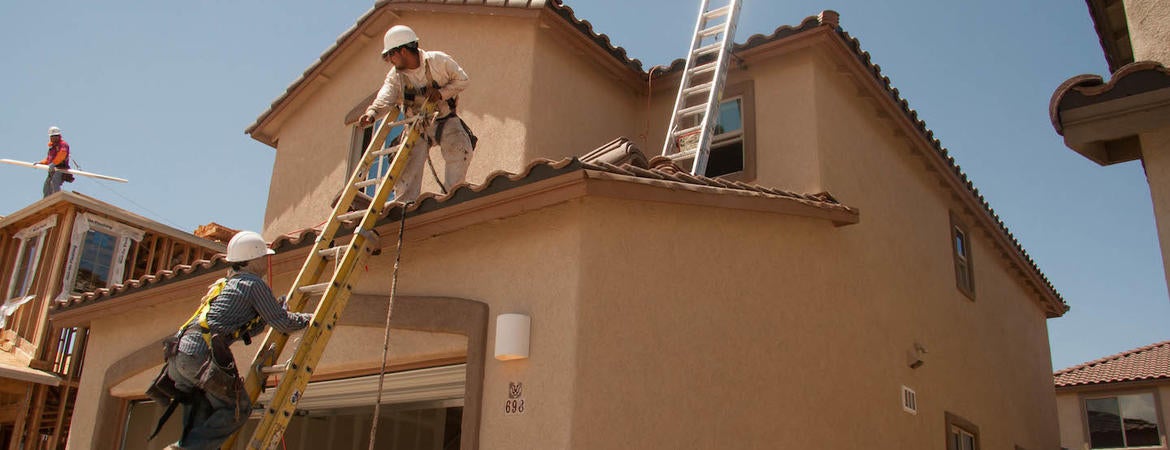
With the Covid-19 pandemic wreaking havoc on the economy, we’re all hoping for a quick recovery.
But it might take a while, explains Gloria González-Rivera, a professor of economics at the University of California, Riverside. González-Rivera received her doctorate from the University of California, San Diego, where she wrote her dissertation under the supervision of 2003 Nobel Laureate Professor Robert F. Engle.
Her research focuses on the development of econometric and forecasting methodology with applications to financial markets, volatility forecasting, risk management, and agricultural markets. One area of particular interest is predicting and limiting the economic damage of rare natural and human-caused events. Here, she offers insight on how we might find our way out of the current crisis.
According to the New York Times, the International Monetary Fund issued a warning that “the world is facing its worst downturn since the Great Depression.” What is your reaction to this?
These predictions assume mitigation measures will work, the virus will be contained to some extent, and we will not face another relapse.
The economic models on which these predictions are based also do not account for the psychology and fear of people, which will certainly affect their behavior.
For example, the unemployment numbers are staggering. In the U.S., 22 million jobless claims in four weeks is unprecedented in the postwar years. These are numbers similar to those of the 1929 Great Depression. It is especially hard for younger generations coming out of college and looking for their first job.
For the American economy, where two-thirds of gross domestic product is consumption, consumers are key to recovery. If consumption does not come back to pre-crisis levels, the economy will be in recession for a long time. Stimulus measures like the $2 trillion package approved by Congress are geared to provide some income to consumers and small businesses, so they keep on consuming and operating. However, how and when consumers decide to spend their income is the key to cushion the drop in output growth.
Fear is a powerful decision-maker, but decisions are not always in the right direction. People will become more conservative with their money. Those who can will save more and consume less. More savings and less consumption now will lead to a deeper recession in the months ahead.
Which sectors of California’s economy are most at risk?
The economic landscape of California is a mix of critical and not-so-critical sectors, but in either case, it is highly dependent on the migrant population and supply chains located overseas. The largest economic engines are technology/biotechnology, agriculture, entertainment/tourism, construction, and logistics, plus all the services generated by these activities. Technology and agriculture provide essential goods and services, and either by federal and state policies or by human ingenuity, will be necessarily open.
The sectors at risk now are tourism and the hospitality industry because they depend on the discretionary income of households. Consumers, even after the pandemic is over, will be reluctant to spend as they did in the pre-pandemic months.
What are some things the federal government can do to limit the damage to our national economy?
The federal government and the Federal Reserve are providing massive aid to the economy. We have a combination of fiscal and monetary policy that has worked in previous crises, and it is working now. The $2 trillion stimulus package approved by Congress provides relief to individuals, small businesses, some industries, and state governments. The Federal Reserve provides liquidity by buying the debt — Treasury bonds and government-backed mortgage bonds — that will finance the stimulus package. Basically it is pumping cash into the economy through the financial system.
An open question now is whether the $2 trillion package will be sufficient, or will we need another round of stimulus. It is very likely we will need a second round of stimulus providing additional funding to small businesses to restart their activities and an extension of unemployment benefits.
What can our state government do to limit the damage to California’s economy?
Most importantly, in the short term, the state can guarantee the health of our population by making sure we have enough protective gear, managing hospital capacity, and providing widespread testing. It is also very important that for the unemployed, either self-employed or employees, the state government provides access to all benefits offered by federal programs, not only to traditional unemployment benefits but also to the program known as Pandemic Unemployment Assistance. For small businesses to survive, it is also necessary to provide access to loans and lines of credit.
Our government should follow the advice of the experts, public health officials, and economists, for a gradual opening of the economy, and offer legal protection for those undocumented populations who are vital to the agricultural sector and in other services.
How do you envision the path to long-term recovery?
It will depend on the evolution of the virus. If we were to have therapeutics and a vaccine in place early, the recovery would be relatively fast. The sooner we open the economy, the less damage to the economy. But as we are told by the health experts, the vaccine will take more than a year. The strategy is to achieve a balance between protecting the health of the population and reactivating gradually the economic engine. Thus, the recovery will be slow by design.
The government has a key role in supporting the short and long terms. This crisis has made evident the cracks in our health system and revamping this sector will help to sustain long-term recovery. More long-term investments, big projects sponsored by the government, could provide further stimulus over the long haul.
This pandemic has shown how intimately the world’s economies interconnect, and the devastating consequences of economic destabilization. How can we prepare for future pandemics?
This pandemic is questioning the meaning of “globalization,” and the organization of the world economy could be very different after the pandemic subsides. We may think of relocating some strategic supply networks to the U.S., so we become less dependent on other nations. We may think of designing strategic and resilient long-term plans for firms, so they are able to face any future crisis. This “looking inward” behavior will surely affect global trade, likely making some goods more expensive for consumers. But it will be a relatively small price to pay if, in the long run, the economy is more robust to these horrific shocks.
Do you see opportunities for positive changes?
I am sure technical and medical innovations will save the day, but given the human toll of this pandemic, we should not forget social innovation. How do we want to organize ourselves as a society? What are the strategic sectors for the survival of a nation? What values should we bring to our organizations and employees? What principles should we instill on our youngest?




